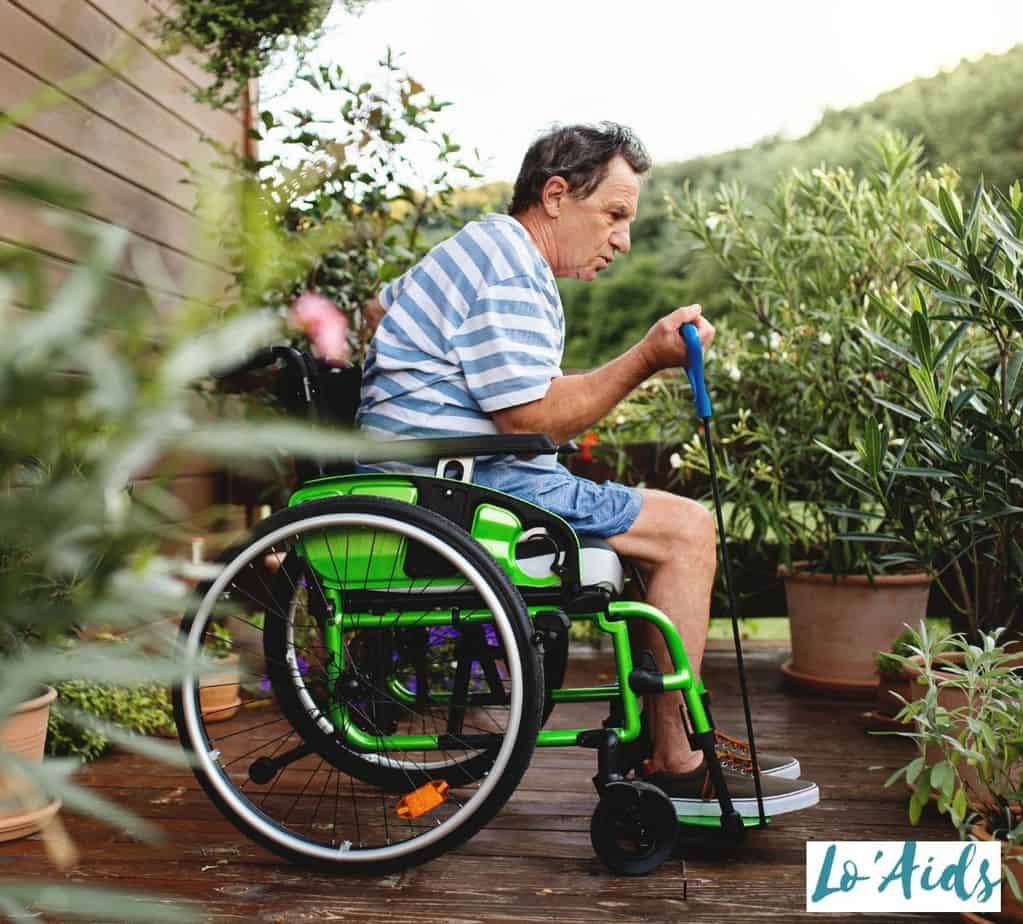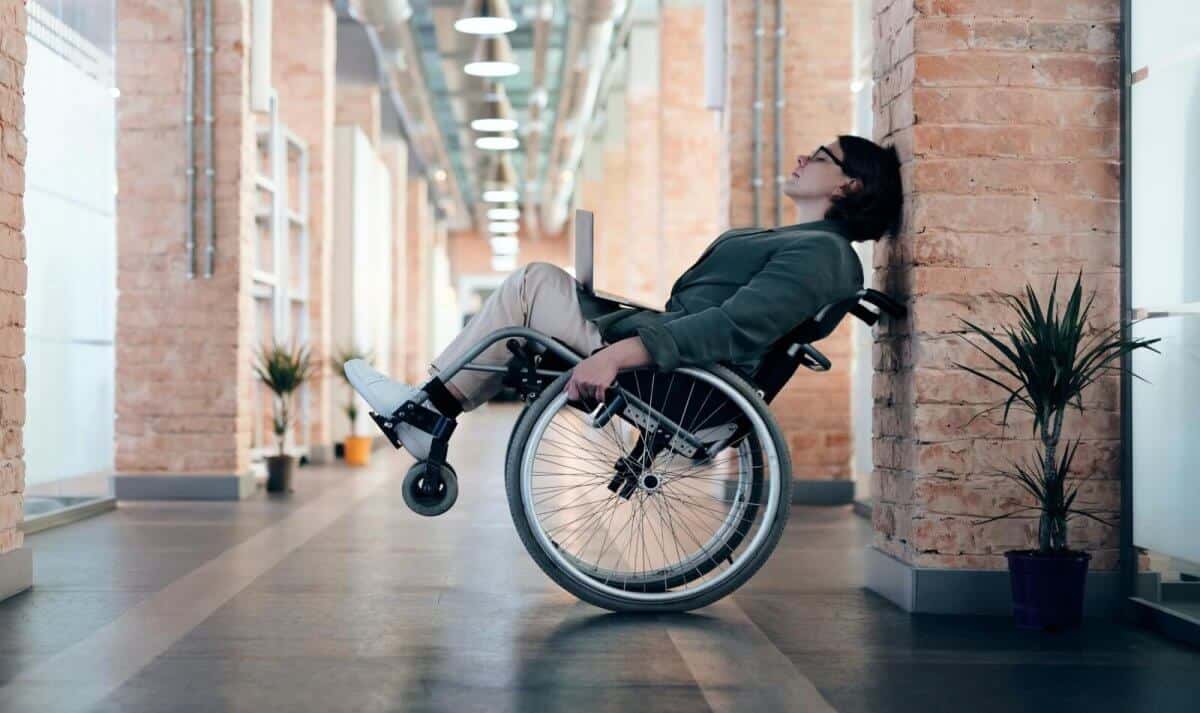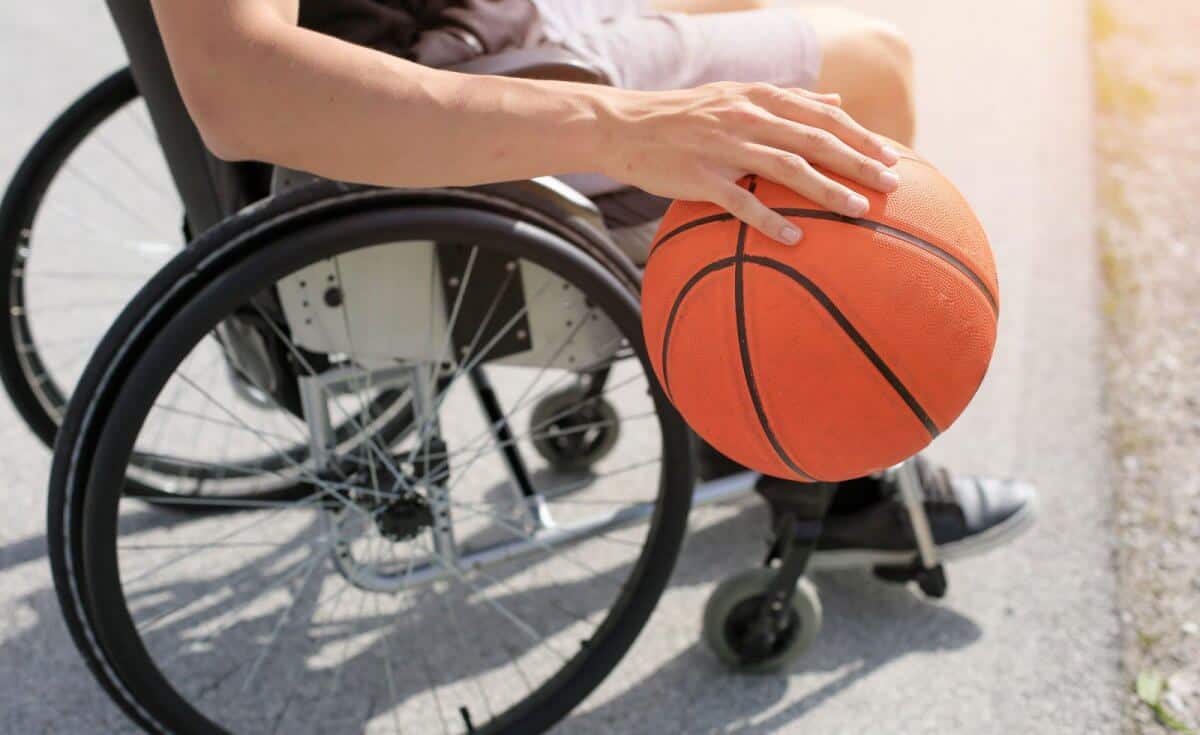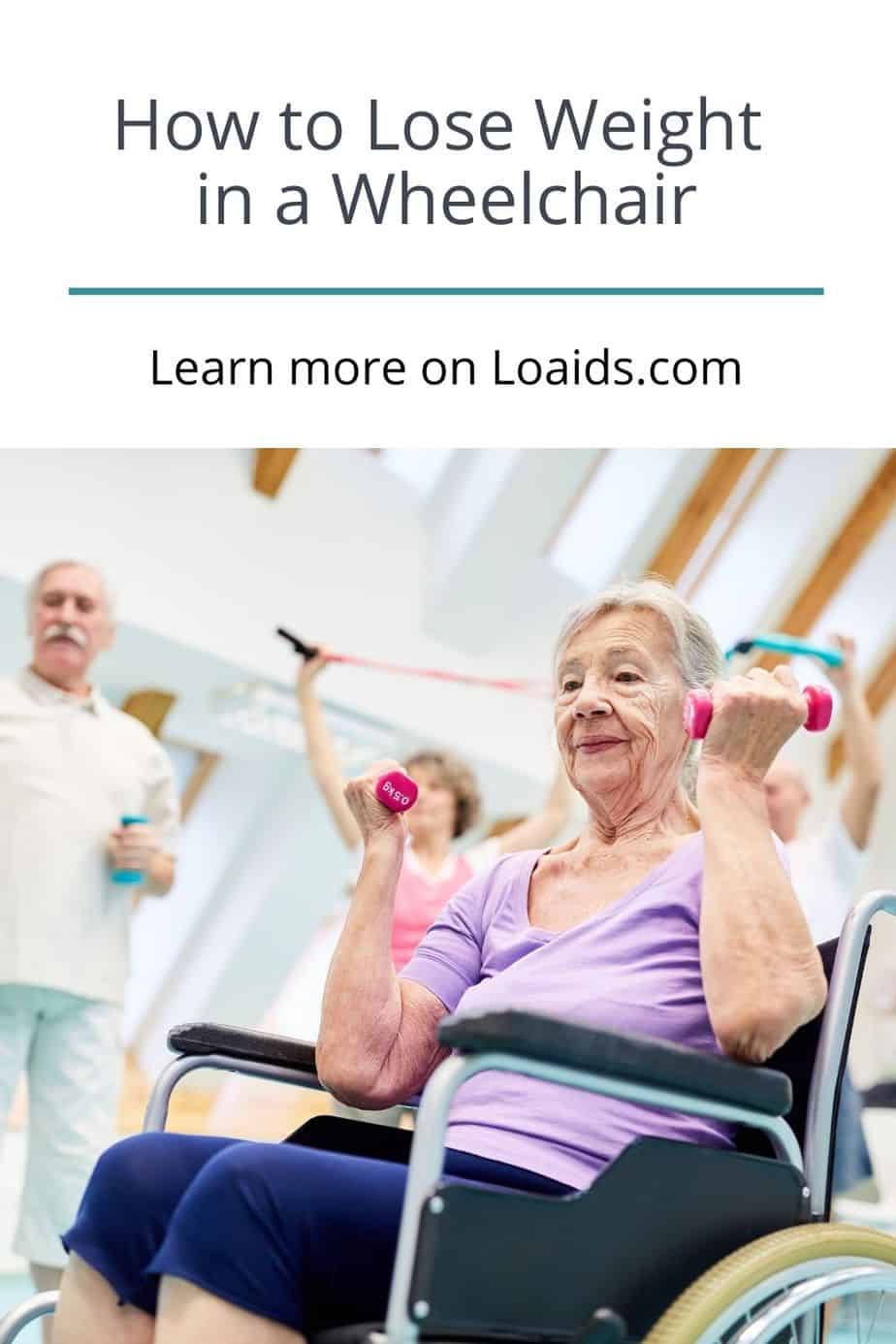How to lose weight in a wheelchair may pose some difficulty, but it is not an impossible task.
There is an increased risk of weight gain in individuals who are in a wheelchair, which can further cause health problems in the future like not fitting in the average width of a wheelchair.
What then can one do in order to lose weight and keep it from coming back?
Let’s find out!
Table of Contents
Things to Do to Lose Weight in a Wheelchair
Whether in a wheelchair or not, there are two main things that one can do in order to lose weight.
Like any other person who needs to reach a target weight, weight loss is achieved only through eating right and some amount of activity.
Eating Right

Even for people who don’t use wheelchairs, eating right is a difficult thing.
Having a healthy diet is, indeed, not that easy to achieve. Food is a source of enjoyment for many but it also is a source of temptation.
In fact, recent studies show that weight loss is best achieved through eating right and eating within a specific calorie range.
So what does it exactly mean to “eat right”?
Lower Your Calorie Intake
Always have in mind that the calories you put in should be less than the calories you use if you want to lose belly fat in a wheelchair. Calories in should be less than the calories out.
Check your current diet and see how many calories you take in within a day.
While a mobile person with an average activity level can use up to as much as 2500 calories in a day, being in a wheelchair means less calorie expenditure.
It would be wise to consult a health professional to give you advice on just how many calories you will be needing.
You may also want to consult a nutritionist who can help you come up with a calories diet plan that you can follow.
On average though, adjusting your diet to a 1,500-calorie diet would be a great way to start your journey to weight loss.
Eat Frequently But in Small Portions
Getting hungry makes one want to eat more. A hormone, known as ghrelin, tends to increase in concentration on an empty stomach.
Unfortunately, one of these hormones’ roles is to increase one’s appetite. This results in you wanting to eat a lot –and gorge– whenever you reach a point of hunger.
The best way to counter this is to divide your food into small portion sizes while eating more frequently. Doing this helps keep your stomach full and ghrelin levels low.
Eat Slowly
As one eats, the gut starts to release hormones and biochemicals to the brain in order to trigger a feeling of satiety.
This is a normal physiological process and is your body’s reaction to food. However, it takes a few minutes for these signals to be transmitted in order to take effect.
When you take time to eat, you give your body time to react to the food you consume.
Eating slowly gives time for these hormones to reach the brain and take effect so that you start to feel full even when you are in the middle of your meal.
This will also make you eat less and within your recommended caloric intake.
Have a Diet Rich in Fiber
It is said that having as much as 30 g of fiber a day helps greatly in achieving weight loss. Fiber, more specifically soluble fiber, slows down the release of digested food from the stomach to the gut.
Remember the hunger hormone ghrelin? Soluble fiber helps decrease levels of ghrelin in the blood as well so you don’t get hungry easily.
Soluble fiber, therefore, helps prolong the filling of fulness while lessening cravings and hunger pangs. This results in lessened food intake and calories
Good sources of fiber include beans, oats, flax seeds, and vegetables like Brussel sprouts and asparagus. You may want to load up on these when thinking about what to add to your diet.
Take a look at this video for more tips:
Keep Hydrated
Water and other fluids help you keep filling full in between meals. Make sure though that you don’t drink right before meals so that you are able to eat properly during meal times.
Keep Sugars and Processed Food to a Minimum
Sugars have been known to contribute to excessive weight gain.
Food high in sugar usually contains added empty calories, meaning they may contribute to weight gain without contributing much to your health.
Sugar also triggers an increase in insulin levels in order for you to process the sugar you eat.
Insulin, however, also makes you store any unused sugars and turns them into fat which may increase your weight.
Try to avoid sodas and junk food which are sources of sugar in order to keep your weight within check.
Keeping Active

Being in a wheelchair may limit your movement, but there are still many types of exercise that you can do in order to stay healthy and within your ideal weight.
In fact, there is no age limit when it comes to being physically active, even when in a wheelchair.
There are even exercises for chair-bound seniors so they can keep physically fit as well.
Physical activity for people in wheelchairs should include weight training and aerobic activity. There are also wheelchair yoga exercises for seniors that can help them keep in shape.
Muscle Strength
Since legs are compromised when in a wheelchair, exercise routines will mostly be upper body exercises. Muscle strength is important so you can keep strong despite being in a wheelchair.
An arm workout using resistance bands or exercises like bicep curls using lighter weights may be a good way to introduce yourself to doing strength exercises.
Isometric exercises which don’t use much weight can build up one’s strength and muscles too.
There are also machines for resistance exercises that can be used for exercises such as chest presses and shoulder presses that greatly help in building strength on the upper body.
Also Check: The Best Mobility Scooter For Outdoors
Cardiovascular Exercise
Heart health is another important aspect to think about when looking at weight loss.
Engaging in a cardiovascular workout is another way to help you keep in shape and meet your target weight while making sure that your heart remains strong.
There are a number of wheelchair workout videos online that you can check out that can show you how to perform these aerobic exercises even when in a wheelchair.
You can also try out wheelchair sports such as basketball and swimming, which are actually fun ways of keeping fit.
Flexibility Exercises

Being in a wheelchair, you would want to be able to maximize the amount of movement you can do.
That means that you have to enhance your flexibility in order to do so.
Stretching after a workout helps get your muscle used to different ranges of motion and in doing so, you can improve your flexibility so you can move more.
FAQs
What’s the best way to lose fat for a wheelchair-bound woman?

Eating healthy and keeping active are the best ways by which a wheelchair-bound woman can lose weight. A good example would be Jamie Goodwin, a 38-year old female who was paralyzed due to a spinal cord injury.
She managed to lose more than sixty pounds just by following a healthy diet and by doing different types of exercise.
How many calories should I be consuming to lose weight while mostly confined to the use of a wheelchair and cane?
While 2000 to 2500 calories are the recommended caloric intake for individuals without disabilities, the same cannot be held true for people who are in wheelchairs. Lessened mobility means that you won’t need much energy to expend so it is expected that, in order to lose weight, you will need to eat less.
On average, it is suggested that around 1500 calories is enough for you to maintain a healthy diet. Eating even less will help you lose weight when wheelchair-bound.
How do you stay fit in a wheelchair?

Staying fit in a wheelchair requires that you engage in as much physical activity as you can. There are chair-bound exercises to help you stay in tiptop shape. Cardio exercise and the use of exercise machines can help keep your heart healthy and your muscles strong. There are many resources online, and even videos, that you can go through that demonstrate different kinds of exercise for wheelchair users that can be of interest to you.
How many calories do you burn in a wheelchair?
The answer to this really depends on the level of activity that you have. In fact, moving your wheelchair on your own already takes much effort and this, in itself, will already burn calories.
Moving your wheelchair on a flat surface at 2mph can already burn 120 calories within 30 minutes. This just goes to show that moving in a manual wheelchair alone serves as a good cardio workout.
Conclusion
While being wheelchair-bound may be hard when it comes to maintaining a healthy body weight, it definitely is not impossible.
As cliche as it may sound, this can be done by maintaining a balanced diet and active lifestyle.
Staying healthy and strong also means that wheelchair-bound individuals can live as independently as possible.
You need to develop that strength in order for you to be able to move around in your wheelchair without much assistance since moving a wheelchair on your own does take effort.
In the meantime, while trying to get healthy, you may want to check out wheelchairs that can help you move around with ease.
Here are some power wheelchair reviews you may want to go through that can help you in deciding what to choose.
Losing weight in a wheelchair takes effort and patience. After all, whether in a wheelchair or not, weight loss doesn’t come overnight.
Rest assured though that once you reach your weight goals, it will be a journey that you won’t regret.
References
- “Four Ways Sugar Makes You Fat.” 2021. Lifelinescreening.com. 2021. https://www.lifelinescreening.com/health-education/diabetes/4-ways-sugar-makes-you-fat?sourcecd=WNAT003.
- Leech, Joe. 2018. “Fiber Can Help You Lose Weight — but Only a Specific Type.” Healthline. Healthline Media. October 26, 2018. https://www.healthline.com/nutrition/fiber-can-help-you-lose-weight#viscous-fiber.
- MacDonald, Ann. 2010. “Why Eating Slowly May Help You Feel Full Faster – Harvard Health.” Harvard Health. Harvard Health. October 19, 2010. https://www.health.harvard.edu/blog/why-eating-slowly-may-help-you-feel-full-faster-20101019605.
- “Manual Wheelchair Use, Exercise and Calorie Burning Examined.” 2011. ScienceDaily. 2011. https://www.sciencedaily.com/releases/2011/10/111028115352.htm.
- Mawer, Rudy. 2016. “Ghrelin: The ‘Hunger Hormone’ Explained.” Healthline. Healthline Media. June 24, 2016. https://www.healthline.com/nutrition/ghrelin#TOC_TITLE_HDR_3.
- Thapoung, Kenny. 2014. “How One Paralyzed Woman Lost Almost 60 Pounds.” Women’s Health. Women’s Health. June 13, 2014. https://www.womenshealthmag.com/weight-loss/a19912557/weight-loss-success-story-jamie-goodwin/.

If you have more tips on how to lose weight in a wheelchair, please share them with us below!





